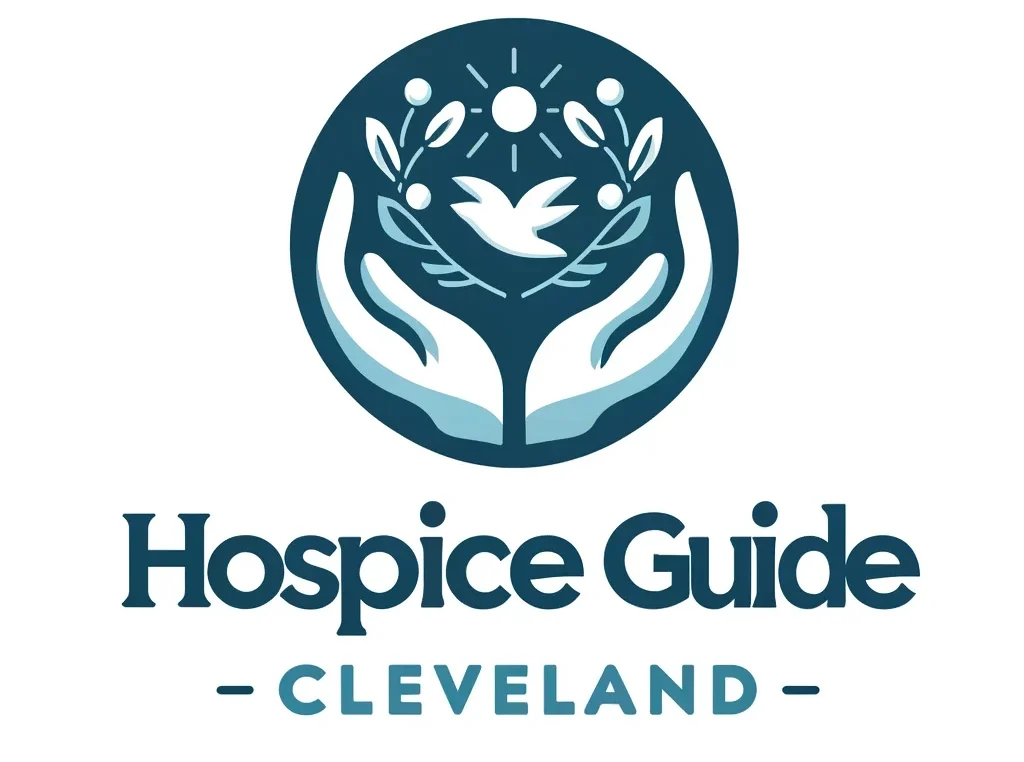Effective hospice pain management is paramount in ensuring that patients facing terminal illnesses experience the highest quality of life possible in their final days.
The philosophy of hospice care is rooted in the concept that individuals at the end of their life deserve to pass comfortably, with dignity, and as free from pain as possible.
To achieve this, healthcare providers focus on assessing, managing, and alleviating pain and other distressing symptoms.
They utilize a combination of medical expertise, compassion, and specialized knowledge to tailor pain management strategies to the unique needs of each patient.

A holistic approach to hospice pain management not only includes pharmacologic interventions but also integrates a variety of non-pharmacological methods to address the physical, emotional, and spiritual facets of pain.
Through meticulous pain assessments and the application of comprehensive treatment regimens, hospice teams strive to enhance comfort while honoring the patient’s preferences and goals of care.
This level of individualized attention allows for effective pain control, which is critical as it impacts all areas of a hospice patient’s life, from their ability to interact with loved ones to their overall sense of peace.
Key Takeaways
- Hospice care prioritizes comfort and quality of life through personalized pain management strategies.
- Teams use comprehensive assessments to guide effective pharmacologic and non-pharmacologic treatments.
- Pain control is integral to patient well-being, influencing both physical comfort and emotional peace.
Understanding Hospice Care
Hospice care focuses on supporting the quality of life for patients who are nearing the end of their life journey. It involves a compassionate and comprehensive approach to manage the physical, emotional, and spiritual turmoil that patients and their families may encounter.
Principles of End-of-Life Care
In the realm of hospice care, the primary principles revolve around respecting the dignity of the patient and providing comfort rather than curative treatment.
Hospice affirms life and acknowledges dying as a normal process. The care is crafted to neither hasten nor postpone death. Instead, it aims to enrich the quality of the remaining life by managing pain and other distressing symptoms.
Patient and family are considered a single unit of care, ensuring that the needs of both are addressed.
The interdisciplinary nature of hospice teams, which often include doctors, nurses, social workers, and spiritual advisors, collaborate to develop and implement a comprehensive plan that aligns with the patient’s wishes and family’s needs.
Role of Palliative Medicine
Palliative medicine serves as the backbone of hospice care, providing an integrated approach to alleviate pain and other symptoms that cause distress.
With a focus on enhancing quality of life, palliative care offers relief from distressing symptoms including physical pain, as well as addressing psychological, social, and spiritual issues.
In palliative medicine, communication and decision-making are fundamental aspects to ensure the care provided aligns with the patient’s goals and values.
By relieving suffering in all areas of a patient’s life, palliative care assists patients in achieving the best possible quality of life during their end-of-life journey.
Pain Assessment in Hospice Patients
Effective pain assessment is crucial for delivering compassionate and appropriate care in hospice settings. Accurate evaluation allows healthcare professionals to understand the severity and nature of a patient’s pain, leading to better pain management strategies.
Pain Rating Scales
In the hospice environment, various pain rating scales are employed to determine the intensity of pain a patient is experiencing.
The most commonly used is the Numerical Rating Scale (NRS), where patients rate their pain from 0 to 10.
However, in cases of cognitive impairment, alternative scales like the PAINAD (Pain Assessment in Advanced Dementia) or the FLACC (Face, Legs, Activity, Cry, Consolability) Scale may be utilized.
These tools consider observable signs and symptoms of pain, such as facial expression and body movements, to assess discomfort in non-verbal patients.
Observation and Patient Interview
Beyond scales, pain assessment in hospice care also involves detailed observation and patient interviews.
Healthcare providers look for verbal and non-verbal cues, including groaning, restlessness, or changes in vital signs that might indicate pain.
Patients who can communicate are asked to describe their pain, including the location, duration, and factors that alleviate or exacerbate it.
This comprehensive approach ensures a holistic understanding of the patient’s condition.
Managing Cognitive and Communication Barriers
Managing cognitive and communication barriers is essential during pain assessment.
When patients cannot effectively communicate due to cognitive issues, healthcare providers rely on alternative communication methods and observational skills.
Informal conversations with family members and the use of validated assessment tools designed for non-communicative patients are integral to this process.
Accurate assessment is particularly challenging but critical for ensuring these patients receive the compassionate pain management they need.
Pharmacologic Pain Interventions

Effective pharmacologic pain interventions are essential in hospice care, aiming to relieve discomfort and maintain quality of life. These interventions use various medication classes to manage different types and intensities of pain.
Opioids and Adjuvant Analgesics
Opioids, such as morphine, are the cornerstone of pain management in hospice care. They work by mimicking the body’s pain-relieving chemicals.
Due to their efficacy, opioids are often the first-line treatment for severe pain, especially when pain is related to cancer.
Alongside opioids, adjuvant analgesics, which can include antidepressants and anticonvulsants, are used to target specific pain types, such as neuropathic pain.
For example, combining morphine with an anticonvulsant like gabapentin can enhance analgesia and potentially reduce opioid-related side effects.
Nonopioid Medications
Nonopioid medications serve as a base for pain treatment. They include acetaminophen and NSAIDs (Non-Steroidal Anti-Inflammatory Drugs), providing analgesia for mild to moderate pain.
These medications are often used in combination with opioids, allowing for better pain control while possibly reducing the amount of opioids needed, thus minimizing the risk of tolerance and dependency.
Medication Management and Side Effects
Managing medications in hospice care requires balancing effective analgesia with minimizing side effects.
Tolerance to opioids can develop, leading to the need for higher doses to achieve the same level of pain control.
Side effects of opioids can include drowsiness, constipation, and nausea; for NSAIDs, risks include gastrointestinal bleeding or kidney damage.
Steroids may be prescribed to reduce inflammation and improve pain from nerve compression or bone pain; however, patients must be monitored for potential side effects like fluid retention or an increased risk of infection.
Monitoring and adjusting medications is a key part of hospice care to ensure that patients’ pain is managed effectively, preserving their dignity and comfort in end-of-life care.
Holistic and Complementary Approaches
Holistic and complementary approaches to pain management in hospice care focus on the whole person, ensuring comfort and alleviating not just physical pain but also addressing spiritual, emotional, and psychological distress.
Non-Pharmacological Pain Management
Non-pharmacological interventions can play a pivotal role in pain management for hospice patients.
Techniques such as massage therapy and music therapy are often utilized to provide comfort and alleviate physical discomfort, as well as to reduce anxiety and improve sleep.
Research has shown that around a fourth of patients in hospice care report receiving such complementary therapies, recognizing their value in enhancing quality of life.
Spiritual and Emotional Support
Spiritual pain and emotional distress can significantly impact a patient’s experience in hospice.
Addressing spiritual needs is a critical aspect of holistic care.
Hospice care teams often include spiritual support professionals who are trained to provide necessary guidance and reassurance, fulfilling a core aspect of the patient’s well-being as articulated by hospice foundations offering complementary pain management techniques.
Caregivers and Family Support
Family caregivers and professional caregivers are integral to the delivery of holistic hospice care.
Through training and support from the hospice team, including social work, families can better understand and participate in non-pharmacological therapies, fostering a supportive environment that can ease the patient’s emotional pain.
Essential to this is understanding that caregivers require reassurance and guidance, as the role they play in the patient’s life becomes more pronounced towards the end of life.
Institutions like Honor Hospice emphasize their commitment to supporting not only patients but also their families during these challenging times, a principle that is fundamental to their approach to holistic pain management.
Frequently Asked Questions
The management of pain in hospice care is multifaceted, focusing on physical, emotional, and spiritual pain relief tailored to an individual’s needs.
What are the guidelines for managing pain in hospice care?
Guidelines in hospice care recommend regular pain assessments using established scales and the expertise of clinicians. This ensures pain management is both appropriate and responsive to the patient’s needs.
Detailed guidelines on approaching pain management are available, particularly on the Samaritan website.
How does pain typically present in patients at the end of life?
Pain at the end of life can manifest in various forms, from chronic, dull aches to acute, sharp discomfort. It often includes both physical and psychosocial elements and can significantly affect a patient’s quality of life.
What are the four principles of pain relief in palliative care?
In palliative care, pain relief is grounded on four principles: assessment, right matching of medication to pain level, anticipation of pain, and attention to detail in pain management plans. These ensure that each patient’s pain is treated with individualized care and precision.
What distinguishes palliative care from pain management?
Palliative care encompasses total care for patients with serious diseases and aims for the best possible quality of life, which includes, but is not limited to, pain management. Pain management specifically targets the alleviation of pain that may be experienced in both curative and palliative contexts.
What types of pain are most commonly encountered in palliative care?
The most common types of pain in palliative care include nociceptive pain from tissue damage, neuropathic pain from nerve damage, and psychogenic pain which is influenced by psychological factors. Each type requires a different approach to management.
What are the indicative signs that a patient is approaching the end of life?
Signs that a patient may be nearing the end of life include worsening weakness and fatigue, decreased appetite and intake, changes in respiratory patterns, and altered consciousness or responsiveness, among others.
These indicators can help the hospice team to adjust care appropriately.

